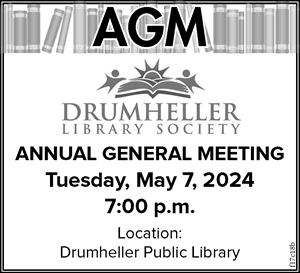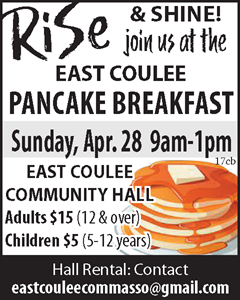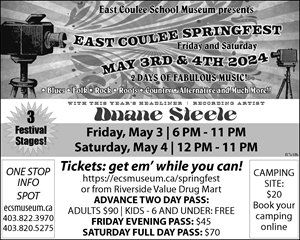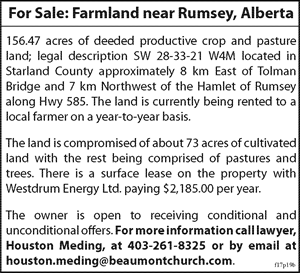 Often history fades as the main players disappear. This may be the case with the members of the Dewar family in Drumheller, But Fred Orosz has a few clues about lives lived that include a possible visit with the King and Queen.
Often history fades as the main players disappear. This may be the case with the members of the Dewar family in Drumheller, But Fred Orosz has a few clues about lives lived that include a possible visit with the King and Queen.
Orosz worked with Dekeyser Auctions and a few years ago they held the estate auction of Marion Dewar. She lived on 3rd Avenue in what was her family’s home and she was known to have owned many cats.
Two artifacts found that Orosz managed to get hold of were two medals with ribbons, mementoes from the royal visit to Calgary in 1939. The badges were labeled as for being guests of the visit at the Al Azhar Temple and are dated May 26, 1939.
Whether these mementoes were Marion’s, or whether they belonged to her parents is not known. There were more mementoes including Marion and her twin sister’s degrees from the University of Saskatchewan and a healthy collection of photos, which shed a little light on a prominent family during the coal mining years, and the Hills of Home bore some of the family’s story.
Marion’s parents were both born in Nova Scotia. Her mother Sadie came west in 1909 to work as a teacher in Bellevue. She had a 10-year career teaching in schools in Blairmore, Frank, Coleman and Fernie. She came to Drumheller to teach Grade 1 and 2 in about 1918. This was the height of the Spanish Flu epidemic and she accounted to her daughter stories of people wearing masks and coffins at the train station as she travelled.
Marion’s father Jim’s road to the valley was a little longer and winding. He headed west in 1897-1898 to the Yukon during the gold rush. Not much was known about his time up north but in 1912, he visited his cousin Donald Dewar in Calgary.
Donald had an interest in the Newcastle Mine with Jesse Gouge. The mine was in need of an accountant and Jim took the job.
Marion’s mother was boarding at the home of Dan Macaulay and that was where she met Jim. According to the account in The Hills of Home, She moved back to live in Fernie, but found life wasn’t as interesting without Jim, and she returned to Drumheller. In October 1921, the couple was married in Winnipeg.
In 1924, Sadie gave birth to triplets, but only Marion and her sister Dorothy survived. The Hills of Home doesn’t detail too much, except what appears to be a happy childhood.
The collection of photos of Orosz shows a close-knit family. At a time when photos were an expensive luxury, the family has dozens of the two girls with their parents and their collie. A couple Toronto Conservatory report cards show Marion studied piano and she had a degree in Household Science from the University of Saskatchewan. Her sister also attended the school. She worked in Manitoba as a dietician.
The interesting curiosity however is the medals from the royal visit.
While many remember just two years ago the pomp and circumstance when William and Kate came for the Calgary Stampede, such a visit was just as big in 1939, if not bigger. In fact, on May 26, 1939, the day King George VI and Queen Elizabeth visited, a statutory holiday was declared in Drumheller.
The City of Drumheller Council chipped in to help pay the train fares to make it possible for any student from Drumheller to make the trek to see the royal couple. An estimated 600 students boarded the trains the Friday before the visit.
The twins would have been in their early teens at the time of the royal visit, however it is not clear whether this medallion was for a private party with an audience with the royals or a simple memento given out to school children.
Marion’s sister Dorothy passed away in 1964 and Marion came home to care for her widowed mother. Marion was an active member of the Knox United Church and a member of the Drumheller Walking Club. She passed away in 2004.
Orosz says he is planning to donate the items from Marion’s home to the Homestead Museum, including the medallions. While the history behind the medallions is not clear, it is apparent they were important enough for Marion to keep for her lifetime.
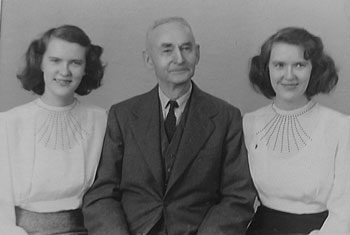
An undated portrait of Jim Dewar and his daughters Marion and Dorothy. Jim was an accountant at the Newcastle Mine. Above is a photo of two medallions from the 1939 royal visitation of King George VI and Queen Elizabeth.

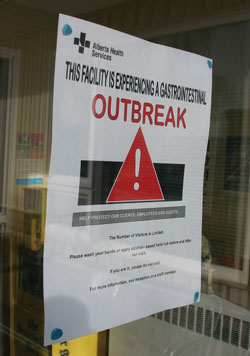 The Sunshine Lodge is experiencing an outbreak of flu-like cases and is limiting visitation.
The Sunshine Lodge is experiencing an outbreak of flu-like cases and is limiting visitation.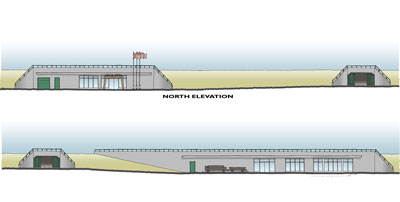 It’s been a busy two years for the Atlas Coal Mine and they aren’t showing any signs of slowing down.
It’s been a busy two years for the Atlas Coal Mine and they aren’t showing any signs of slowing down.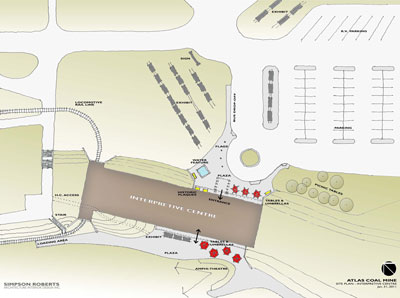 brings in terms of variable weather conditions. We need to provide a little more of a comfort station, looking at more of the visitors’ needs. It will also allow us to extend our season and operate at least eight months a year or maybe more,” said Digby.
brings in terms of variable weather conditions. We need to provide a little more of a comfort station, looking at more of the visitors’ needs. It will also allow us to extend our season and operate at least eight months a year or maybe more,” said Digby.





















